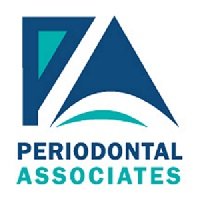Periodontal Disease
What is gum disease?
Gum disease is an infection of the tissues that surround and support your teeth. It is a major cause of tooth loss in adults. Because gum disease is usually painless, you may not know you have it. Also referred to as periodontal disease, gum disease is caused by plaque, the sticky film of bacteria that is constantly forming on our teeth.
Here are some warning signs that can signal a problem:
Gums that bleed easily
Red, swollen, tender gums
Gums that have pulled away from the teeth
Persistent bad breath or bad taste
Permanent teeth that are loose or separating
Any change in the way your teeth fit together when you bite
any change in the fit of partial dentures
Here are some factors that increase the risk of developing gum disease:
Poor oral hygiene
Smoking or chewing tobacco
Genetics
Crooked teeth that are hard to keep clean
Pregnancy
Diabetes
Medications, including steroids, certain types of anti-epilepsy drugs, cancer therapy drugs, some calcium channel blockers and oral contraceptives
See your Periodontist if you suspect you have gum disease because the sooner you treat it the better. The early stage of gum disease is called gingivitis. If you have gingivitis, your gums may become red, swollen and bleed easily. At this stage, the disease is still reversible and can usually be eliminated by a professional cleaning, followed by daily brushing and flossing.
Advanced gum disease is called periodontitis. Chronic periodontitis affects 47.2% of adults over 30 in North America. It can lead to the loss of tissue and bone that support the teeth and it may become more severe over time. If it does, your teeth will feel loose and start moving around in your mouth. This is the most common form of periodontitis in adults but can occur at any age. It usually gets worse slowly, but there can be periods of rapid progression.
Aggressive periodontitis is a highly destructive form of periodontal disease that occurs in patients who are otherwise healthy. Common features include rapid loss of tissue and bone and may occur in some areas of the mouth, or in the entire mouth.
Research between systemic diseases and periodontal diseases is ongoing. While a link is not conclusive, some studies indicate that severe gum disease may be associated with several other health conditions such as diabetes or stroke.
It is possible to have gum disease and have no warning signs. That is one reason why regular dental checkups and periodontal examinations are very important. Treatment methods depend upon the type of disease and how far the condition has progressed. Good dental care at home is essential to help keep periodontal disease from becoming more serious or recurring.
Remember: You don’t have to lose teeth to gum disease. Brush your teeth twice a day, clean between your teeth daily, eat a balanced diet, and schedule regular dental visits for a lifetime of healthy smiles.
What to expect
Patients often ask why they are having “Periodontal Maintenance” when all they want is to have their teeth cleaned. If your Periodontist or Dentist has recommended that you be scheduled for Periodontal Maintenance, or if you have noticed that there is a difference in billing for these procedures, here is a brief explanation:
Prophylaxis, or Regular Cleaning:
A regular cleaning is recommended for patients who do not have bone loss, periodontal disease, or infection around the teeth. There should be no bleeding, mobility of the teeth, receded areas or gaps where the spaces around the roots of the teeth are exposed. In other words, the mouth should be healthy with no bone or gum problems. A regular cleaning, or prophylaxis, removes soft plaque, tartar, and stains from the teeth above the gumline, and only slightly below. A regular cleaning is usually done 2 to 3 times a year, depending on how quickly stain, plaque, and tartar accumulate. It is considered a preventive procedure by your insurance carrier, since regular cleanings will help prevent periodontal disease.
Recovery
Discomfort can vary after root planing, but one can expect it to be more sore afterwards since it’s usually in a deeper region under the gums.
The teeth themselves can become a bit more sensitive to temperature, and bleeding might occur for a little while. Over-the-counter painkillers such as ibuprofen work very well to alleviate discomfort, but stronger painkillers can be given should you need them.
Brushing and flossing can be delayed or done more gently to avoid aggravating any bruised or tender gum areas. Your periodontist or hygienist may recommend salt water or chlorhexidine rinses.
Maintenance
BRUSH YOUR TEETH TWICE A DAY, EVERYDAY
DON’T SMOKE!
FLOSS DAILY
SCHEDULE REGULAR CHECKUPS AND CLEANINGS
EAT A WELL-BALANCED DIET

